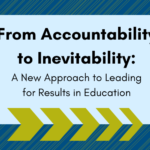The start of a new year is a natural time of reflection. We take time to reflect over our personal goals and write resolutions. We hold meetings and professional development to discuss the second half of the school year. Even the President of the United States prepares his “State of the Union Address” to update the nation of its current progress and position.
At thinkLaw we’re on a mission to support and foster the development of critical thinking skills in ALL students. As part of our work this past fall we surveyed over 800 middle and high school students. We asked them about their critical thinking skills and habits. Student voices matter. It’s important that the adults making decisions take the time to hear what they have to say.
We’d like to share with you these results of this survey and our reflections over the student responses over the next few days in a five part blog series titled, “The State of Critical Thinking,” where we share findings and insights from students across the country on what critical thinking means and look like for them today.
Part 1: What is Critical Thinking?
Critical thinking has become something of a buzzword. Critical thinking is frequently listed as a goal in our educational standards, textbooks, and professional development. The Wall Street Journal claimed in a 2014 article that “mentions of critical thinking in job postings have doubled since 2009.” It seems that everyone is in agreement that critical thinking is valuable, but what is critical thinking? How would you define it?
We asked students in our survey to define critical thinking. Here’s what a few had to say:
- Thinking critically is a way of critically thinking.
- Critical thinking is when you think negatively about your peers. Also, critical thinking is when you say everything about that person, but only the bad things.
Others were a little closer to the mark:
- Critical thinking is digging deeper into a topic and finding newer ideas and looking at different points of view. Critical thinking is important for solving problems.
- Critical thinking is when you think about all the important problems in the world and you try to come up with a solution to those problems.
- Critical thinking is when you think about something very carefully and closely, it is important because when you are doing it your are focused and thinking clearly about it.
We’ve posed this same question to educators all over the country: What is critical thinking? The responses are almost always the same. Educators do a great job of listing critical thinking skills but they almost always miss the second part of the equation. Before we can effectively teach critical thinking, we need to be able to clearly define what it means.
Critical thinking is combination of skills and dispositions critical thinking skills are those that we would label as higher-order thinking: reasoning, inferring, interpreting, analyzing, and meta-cognition.
Skills are necessary to implement critical thinking but the dispositions are equally important. Dispositions are habits, or mindsets, that lead a person to utilize their critical thinking skills. Dispositions like inquisitiveness, truth-seeking, self-confidence, and maturity.
The truth is that most of our students possess critical thinking skills. The struggle we face within our classrooms are with the critical thinking dispositions. Students are not always using the critical thinking skill set they possess.
To further complicate the matter, critical thinking dispositions are CONTEXT DEPENDENT.
Think of the most brilliant person you know. That individual might be a brilliant surgeon who thinks critically every day to save lives and pioneer new surgical techniques. But chances are, that person might be terrible with investments or can’t successfully follow a recipe. The use of our critical thinking skills is dependent on our situation. Frequently our students have a lot of problem solving skills when it comes to their social lives, but fail to make the transition of using those skills at school in an academic setting..
The process of teaching students critical thinking skills AND fostering the development of dispositions PLUS pushing them to use those skills and dispositions across different contexts is a big task.
What strategies are YOU using to help students unleash their critical thinking skills and dispositions in a transferable way?
Tell us your answer by joining the discussion in our Critical Thinking Champions Facebook Group. Every day this week we breakdown the state of critical thinking from the mouths of our students. We’ll discuss what’s going well, what we need to improve, and what we can do next.
State of Critical Thinking Part 2: Persevering Through Hard Times
To order a critical thinking assessment for your students or to learn how your school or organization can adopt thinkLaw’s standards-aligned program that helps educators teach critical thinking to all students, please click here to schedule a time to speak with someone on the thinkLaw team or call us now at (702) 318-7512. Join us on our next webinar; Thinking Like a Lawyer: Powerful Strategies to Teach Critical Thinking to All Students








Critical thinking is simply to find solutions to the problems by keeping facts and figures in sight. Critical thinkers are more rational than being emotional. Critical can be developed by putting yourself in challenging situations which require resolution, especially in a shorter period of time.
Hey. A very interesting article, I believe that you are writing correctly. Critical thinking helps to understand this world and filter out all the rubbish that is on the Internet and in the media
Thanks for sharing such an informative article, a great explanation through examples though.